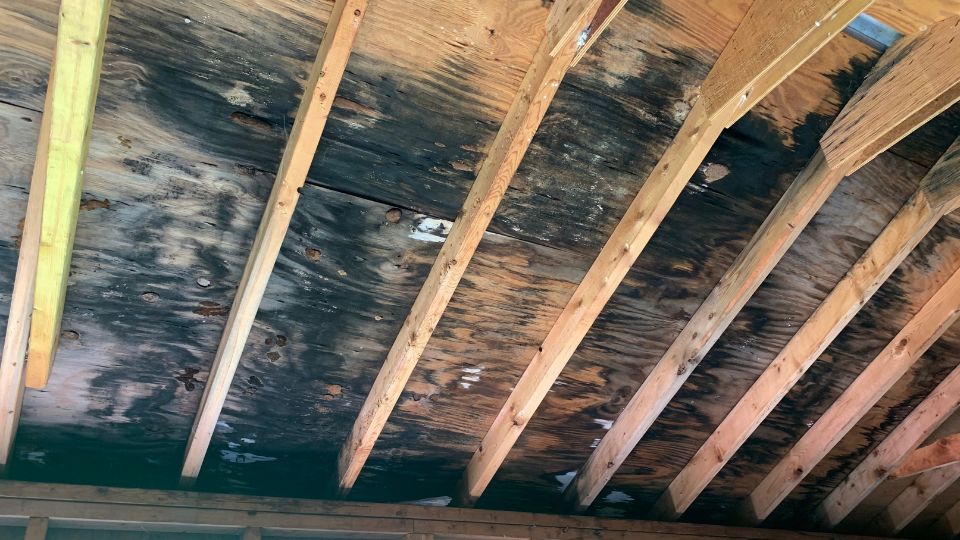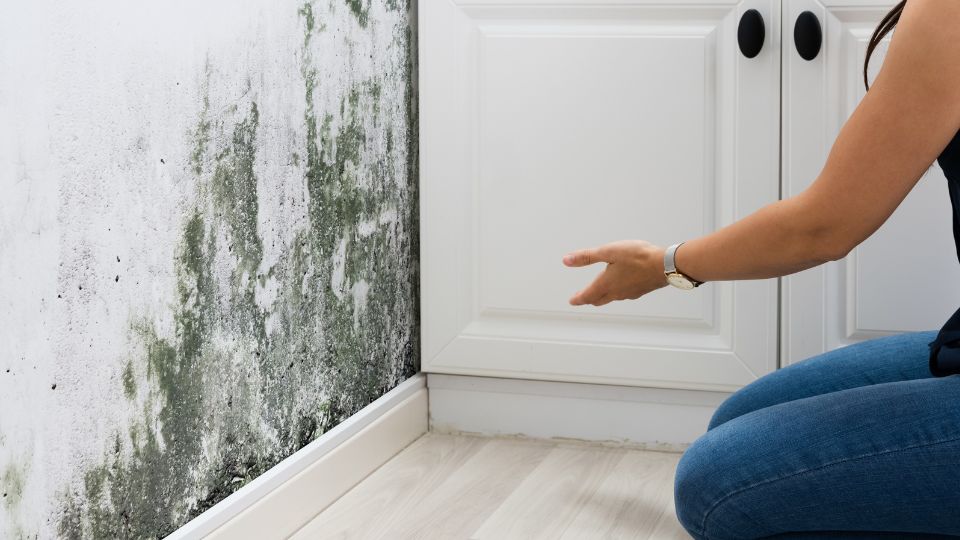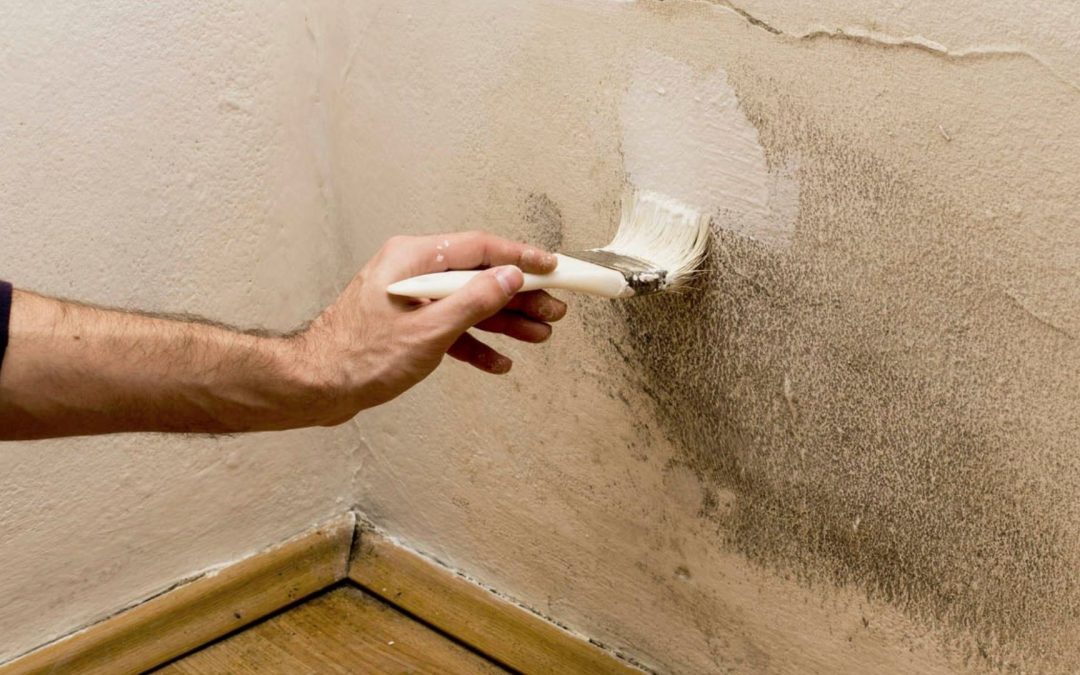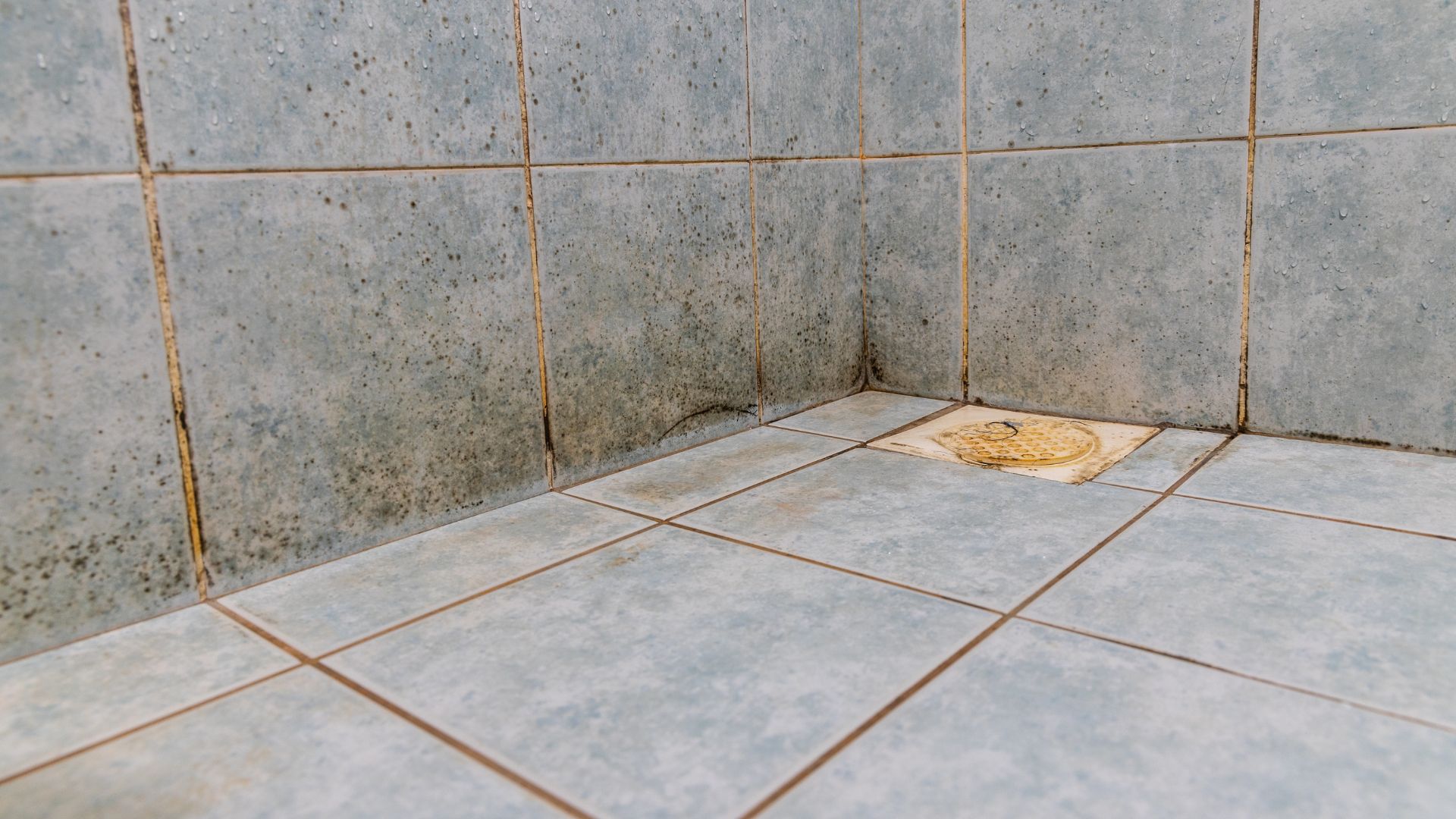
by Mold-B-Gone | Sep 6, 2022 | Mold Facts, Mold in Wood
Mold spores in the air are inevitable, and so is the mold growing on your wood furniture. No matter how often you clean or how well you ventilate your home, there will always be a few spores that slip through and take root in the dampest corners of your house.
Read more: 7 Places Mold Hides In Your Home!
Wooden furniture is especially susceptible to mold growth because they are often kept in humid environments. The good news is that mold on wood furniture is relatively easy to remove, as long as you take the necessary precautions.
Here are a few tips and tricks for removing mold from wood furniture:
1. Identify the Source of Moisture
There are different sources of moisture that can cause mold to grow on wood. These include:
- leaks in the roof or walls
- high humidity levels
- flooding
- damp basements or crawl spaces
If you can identify and fix the source of moisture, this will help to prevent mold from growing back.
2. Use a Dehumidifier
A dehumidifier is a way to remove mold from unfinished wood and cabinets. If the humidity in your home is too high, it can create the perfect environment for mold to grow. Using a dehumidifier can lower the humidity levels and make your home less hospitable for mold.
It is a machine that helps to remove water from the air. Dehumidifiers can be used in many settings, such as during construction, flooding, or high humidity levels.
There are two types of dehumidifiers: desiccant and refrigerant.
- Desiccant dehumidifiers work by absorbing moisture from the air.
- Refrigerant dehumidifiers work by cooling the air and condensing the water vapor.
3. Open Windows and Doors To Allow for Air Circulation
Mold growth is often the result of stagnant, humid air. Allowing fresh air to circulate throughout your home is essential for preventing mold growth and removing existing mold. If possible, open windows and doors to create a cross breeze and improve airflow. You can use fans to help circulate the air in your home.
4. Vacuum the Furniture
Vacuuming is the first step in mold remediation. Use a HEPA filter to avoid spreading spores while you vacuum. If you don’t have a HEPA filter, seal the bag after each use to prevent spores from escaping.
Use a brush attachment to vacuum moldy areas. If the mold has penetrated deep into the wood, you may need to sand the affected area before vacuuming.
After vacuuming, use a damp cloth to wipe down the furniture. This will remove any mold spores that are left behind.
5. Mix Vinegar and Water for Cleaning
The best cleaning solution for white mold on wood is a mix of vinegar and water. Use equal parts vinegar and water; if you’re using distilled white vinegar, use one part vinegar to four parts water.
This natural solution is safe for people and pets and effectively cleans mold off wood surfaces. Apply the mixture to the affected area with a sponge or cloth and scrub until the mold is gone.
6. Sand the Wood
Sandpaper is a great way to remove mold from wood. Be sure to sand in the grain direction to avoid damaging the wood. If you are searching for a mold removal specialist in Atlanta, contact Mold-B-Gone. Our highly trained professionals are experts in mold removal and will work diligently to rid your home of mold.

by Mold-B-Gone | Aug 23, 2022 | Killing Mold, Mold Facts
Amie Skilton from Australia was 37 years old when she moved into an apartment with her now-husband. She was perfectly healthy: she traveled around the country giving keynote speeches, did “fun runs”, and worked as a naturopath and nutritionist.
Then she started to get sick. She noticed allergy symptoms, she gained over 20 pounds, and she started getting chronic fatigue. Amie even started to forget her own name.
Shaken and puzzled, her now-husband took her to the doctor’s office, where they performed a battery of tests. All the tests came back fine, stunning the doctors.
She was referred to a neurologist who later diagnosed her with Type III Alzheimer’s. Type III Alzheimer’s disease is also known as inhalational Alzheimer’s and is caused by airborne toxins.
Amie had a mold expert check her home and found that the underside of the carpet was lined with black mold. This mold grew after a pipe leaked and soaked the carpet, and Amie didn’t know about it until she was already sick. Luckily, after moving out of the apartment, her brain function returned to normal. But who knows what could have happened to Amie if it had gone unchecked?
Today, Amie is a qualified mold testing technician in her native Australia who educates others about the dangers of mold.
The Dangers of Black Mold
Toxic black mold, or Stachybotrys chartarum, grows in wet conditions under the carpet, drywall, and flooring. They produce highly poisonous spores that can cause respiratory illness and fatigue. But not everyone is affected equally.
In Amie’s case, her genetic predisposition caused a severe reaction to mold spores. Just as some people are intolerant to lactose or gluten, some people are strongly affected by toxic mold spores. Most people won’t know until it’s too late.
What To Do About Black Mold In The Home
An ounce of prevention is worth a pound of cure. The best way to deal with black mold in the home is to prevent it from growing in the first place. Water damage is usually the cause, and it’s best to call a specialist immediately if a leak is ever found.
Another cause of mold growth is a high level of humidity in the home. Ensure adequate ventilation to prevent mold growth. Keep humidity levels between 30% and 50% in the home, and check your humidity levels with a meter. A single room might be more humid than others; if that’s the case, a dehumidifier can help. If you’re having persistent issues with humidity in your home, call an HVAC specialist.
The truth about black mold is that once it’s found in a home, it needs to be removed by a professional. Professional mold remediation experts have the tools necessary to remove black mold and prevent it from causing further health issues. Otherwise, it’s best to move to a clean home if you find black mold.
Mold Remediation in Atlanta
25% of the human population has a genetic predisposition to mold-related illness, and most people don’t take the chance: keep your family safe with mold remediation in Atlanta by Mold-B-Gone.
Mold-B-Gone is the premier mold remediation company in Atlanta, specializing in whole-house mold removal. We clear mold caused by water damage and humidity. 100% of our client’s homes have passed a mold inspection in Atlanta after working with us. Best of all, we offer a 5-year written guarantee on all mold removal services.
Speak to a mold removal expert today; call 470-545-4467 and enjoy peace of mind knowing your family is safe.
Read Amie Skilton’s full New York Post story here.

by Mold-B-Gone | Aug 2, 2022 | Mold Facts
Mold is a fungus that can grow almost anywhere there is moisture and organic material. It thrives in humid environments and can cause health problems in people exposed to it.
CDC reports that mold exposure can cause various respiratory problems, including coughing, wheezing, and difficulty breathing. It will cause skin irritation and allergic reactions.
Mold spores are tiny and can be carried by the wind or water so that they can spread quickly. Many believe mold dies when it dries out, but that is not the case. Mold can survive in both dry and wet conditions.
Read on to understand mold and how to prevent it from growing in your home.
How Does Mold Grow in Homes?
Mold typically enters homes through open doors, windows, or vents. Once inside, it can quickly begin to grow and spread. Mold loves damp, dark, and humid environments, so bathrooms, basements, and laundry rooms are often ideal spots for mold growth. Leaky pipes or roofs can also create the perfect conditions for mold to thrive.
When the indoor humidity levels are high, mold can grow on various surfaces, including wood, carpet, paper, and food. Mold can also grow on dust, lint, or fabric fibers.
What Happens When Mold Spores Lack Moisture?
Mold spores need moisture to grow and multiply, but they can remain dormant for years without it. When mold spores land on a moist surface, they begin to reproduce. The new mold colony then produces more spores carried away by the wind or water droplets to start new colonies elsewhere.
So what happens when mold spores are deprived of moisture? They don’t die, but they do become inactive. If the conditions that caused the mold growth in the first place are no longer present, the spores will remain dormant until they once again come into contact with water or high humidity.
Some mold spores are more resistant to drying out than others, which is why mold can often return after removal. It’s essential to address the underlying moisture problem to prevent mold from returning.
Read more: 10 Facts About Mold People Did Not Know.
Is Completely Dried Mold Safe?
Once the mold is completely dried, they become light in weight and fragile. They can spread through the air very quickly. It can easily contaminate other areas and items.
For example, black mold is a type of mold that can release toxins called mycotoxins. These toxins can cause serious health problems in humans, especially in young children and the elderly.
Expert Methods for Mold Removal
Insulate the area: One of the most important things you can do to prevent mold is to insulate your home. It will help to keep moisture out and prevent condensation from building up.
Use a dehumidifier: By keeping the air in your home dry, you can also prevent mold from growing. Dehumidifiers help to remove moisture from the air, which can then be drained away.
Keep the area clean: mold loves to grow in dark, damp, and cluttered areas. So by keeping a home clean and free of clutter, you can help to prevent mold from growing.
Contact Mold-B-Gone for expert mold removal service in Atlanta. “We are experts in mold remediation and will ensure your home is mold-free.
For more information on mold, read our blog:- 7 Types of Mold You Might Encounter in Your House.

by Mold-B-Gone | Jul 20, 2022 | Mold Facts
Mold and Mycotoxins can have a severe impact on your health. It can cause respiratory, skin irritation, and other serious health problems.
Mold can be a pesky issue. It often pops up where it’s hard to see and even harder to get rid of. So, what happens when you find black mold on your walls or ceilings? Can you paint over it and make the problem disappear? What happens when you cover mold with paint to kill it?
This blog post will explore the answer to that question and more! We’ll discuss what mold is, why you should avoid painting over it if possible, and some tips for getting rid of mold once and for all.
What Problems Can Occur If You Paint Over Mold?
Mold is a fungus found in damp, humid environments. It can grow on almost any surface, including wood, paper, cloth, and concrete. When mold spores touch a wet or moist surface, they grow and multiply.
Mold reproduces by spreading spores into the air. The spores are invisible to the naked eye and can travel long distances. When they land on a surface, they start to grow and form new mold colonies.
If you paint directly over mold, it can result in problems like:
- The paint does not adhere properly to the surface
- The mold continues to grow beneath the paint
- Health problems from exposure to mold spores
- Bubbling and peeling of the paint
So, as you can understand, it’s not a good idea to try and cover up mold with paint. But what can you do to get rid of it? It is best to call a mold remediation specialist to take care of the problem for you. They have the knowledge and experience to safely remove mold from your home before you paint the walls and ceilings.
Read more: How To Detect Mold Behind Walls
Steps Followed by Experts to Remove Mold
Here are some steps to eliminate mold before painting over it:
- Start by identifying the source of moisture
- Scrape the mold off
- Apply a mold-resistant primer
- Paint with mold-resistant paint
Read more: How to Remove Mold from Wood: Expert Tips and Tricks
If you follow these steps, you can remove the mold before painting over it effectively. However, if the source of moisture is not eliminated, the mold will continue to grow and eventually cause the paint to peel.
Is mold a concern during renovations? It’s best to hire a professional. Mold remediation services involve identifying the source of moisture, removing the mold, and repairing any water damage. It will ensure that the mold doesn’t come back and that your paint job will last.
Mold-Be-Gone offers the best mold inspection in Atlanta. Our company is certified, licensed, and insured. We provide services for all residential customers, including crawlspace encapsulation, IAQ testing, duct cleaning, eviction clean-outs, and whole-house & room sanitizing. Our final goal is to rid your home of mold and mildew. Get in touch with us to start the process.

by Mold-B-Gone | Jul 6, 2022 | Bathroom Mold
Mold can be a pesky problem in the bathroom. It often pops up in damp and humid environments and can be challenging to get rid of. According to the EPA (Environmental Protection Agency), mold can cause various health problems, including respiratory issues, headaches, and skin irritations.
If you’re struggling with mold in the bathroom, don’t worry – we’ve covered you. This blog post will discuss four tips for removing bathroom mold from your home. We’ll also provide some helpful resources to help you prevent mold outbreaks.
1. Identify the Source of the Mold and Fix It
Mold growth happens due to condensation, water leaks, or high humidity. If you find mold in your bathroom, look for the source of moisture causing it and fix it. Once the source is fixed, the mold will stop growing.
For example, professional mold removal companies say leaks often cause mold in bathrooms in the shower or around the toilet.
If you leak, fix it and dry the area thoroughly to prevent mold from growing back.
Read this article to understand why is mold growing in my toilet. It will give the right reasons and solutions to deal with the problem.
2. Dry Out the Area As Quickly As Possible
Use a dehumidifier or open the bathroom window to help circulate air and dry out the area. If you can, find the source of the moisture and fix it. If your bathroom is prone to condensation, make sure to use an exhaust fan during showers and baths, and keep the door open afterward to allow any lingering moisture to dissipate.
3. Use a Disinfectant To Kill the Mold Spores
Disinfectants contain chemicals that can kill mold spores. You can purchase these at most hardware stores. Ensure to check the instructions on the label, and take care when using them as some disinfectants can be harmful if misused.
Hiring an expert to remove mold from your bathroom is suitable if the problem is severe. They will have the equipment and experience to eliminate mold safely and effectively.
4. Prevent Future Mold Growth
Black mold is often found in bathroom showers, ceilings, and walls. After you clean or remove the mold, you need to take steps to prevent future mold growth. To do this, you need to:
- Keep your bathroom clean and dry
- Use an exhaust fan or open a window when showering
- Fix any leaks in your bathroom
- Clean up any spills promptly
- Dry off wet areas after use
- Use mold-resistant products
- Monitor your bathroom for mold growth regularly
If you find mold growing in the bathroom, you should clean it immediately. By taking these steps, you can prevent mold growth and keep your bathroom looking and smelling fresh.
For expert mold removal service Atlanta, Mold-Be-Gone is the company to call. We have several years of experience in mold remediation and removal. Our certified professionals will work quickly and efficiently to rid your home or office of mold infestation.





